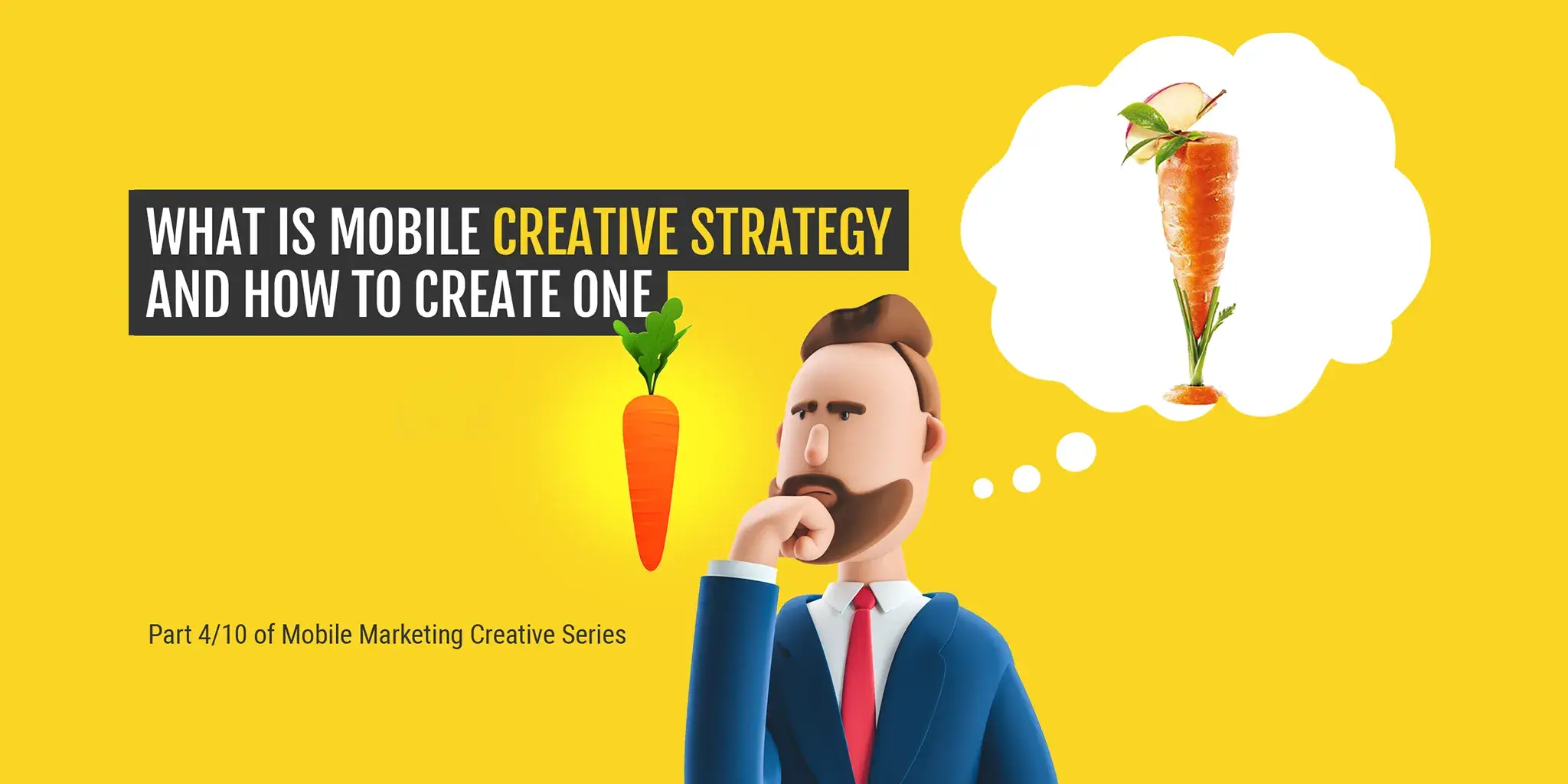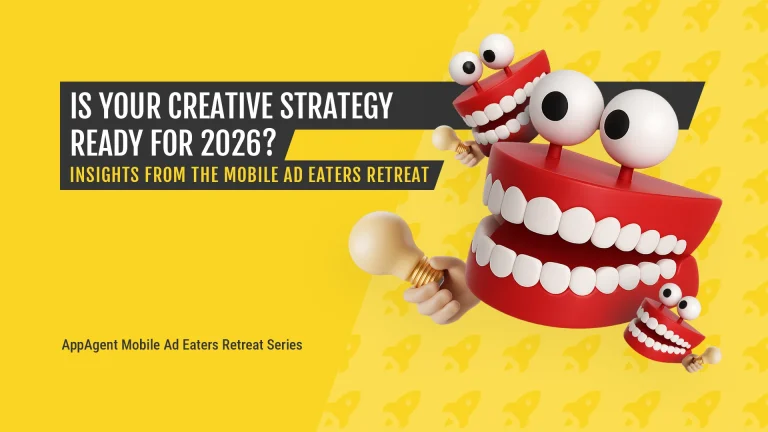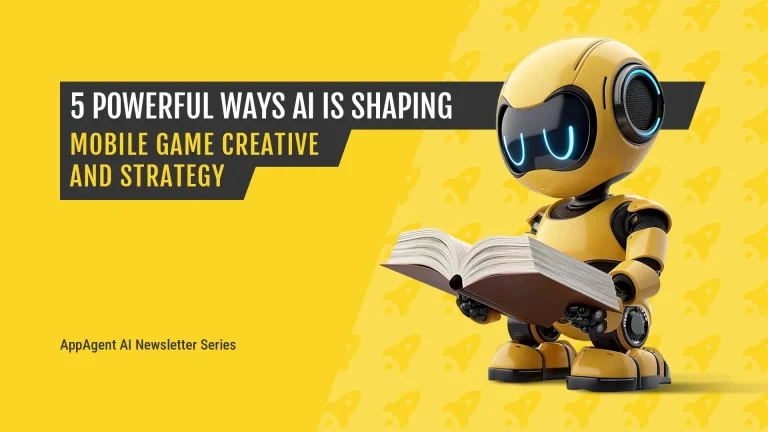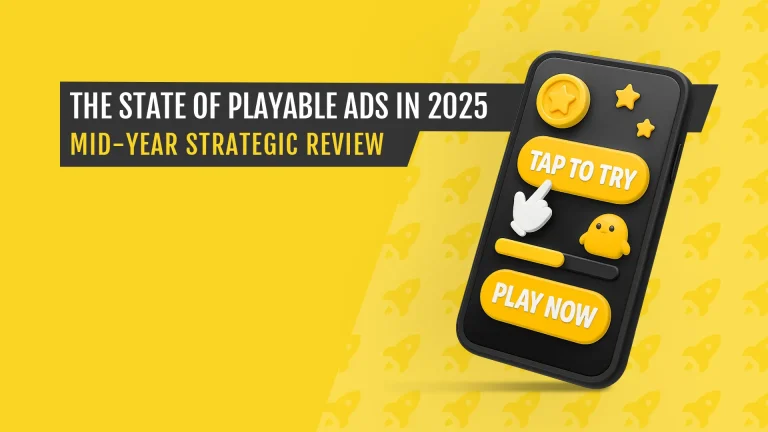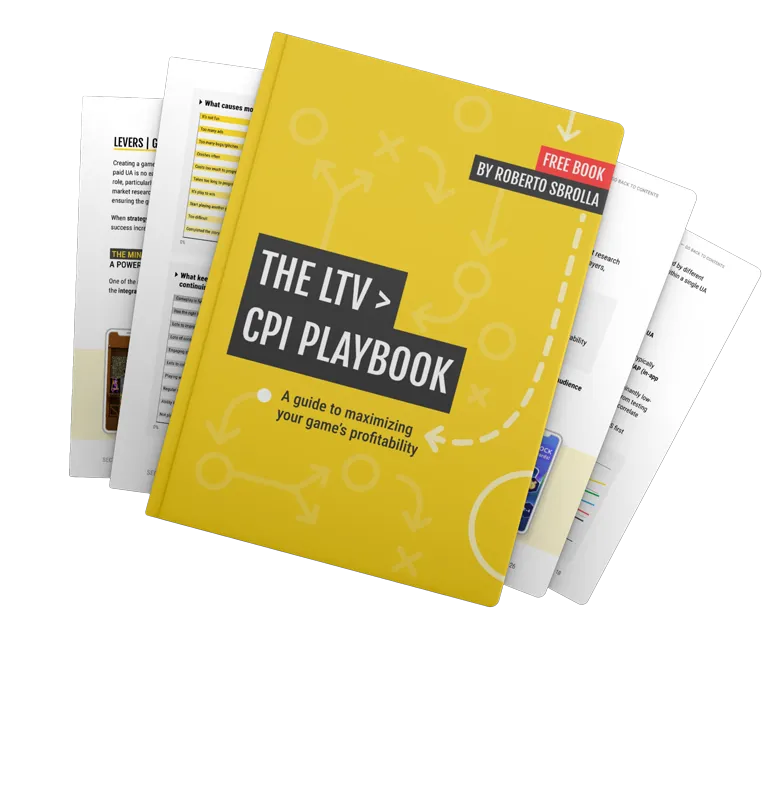Welcome to the fourth part of our Mobile Marketing Creative Series & learn Mobile Creative Strategy basics. In ten episodes, we aim to provide insight and inspiration on creating thumb-stopping visuals to promote your app.

Download the Mobile Ad Creatives eBook today to read the other nine parts of this series. The comprehensive guide includes ten core topics condensed into a practical blueprint with examples from AppAgent’s Creative Team.
In this article, you will learn:
- What constitutes a creative strategy and a creative angle.
- How App Store Optimization (ASO) and User Acquisition (UA) should work together.
Hassle-Free Creative Design for Mobile Apps & Games
In the previous parts of this series, we discussed three topics that come together to form a major output: the creative strategy.
These topics include:
- Understanding the audience and their motivations.
- Analyzing the competition.
- Defining the unique selling proposition and brand.
The mobile creative strategy brings all these components together in one document that we at AppAgent call a canvas.
Using this canvas has its advantages, as it speeds up our process of generating concepts that align with how we want to present the app or game. Through continuous testing of various marketing creatives such as videos, icons, and screenshots, we discover which forms resonate best with our audience. This process of testing is ongoing and ever-evolving.
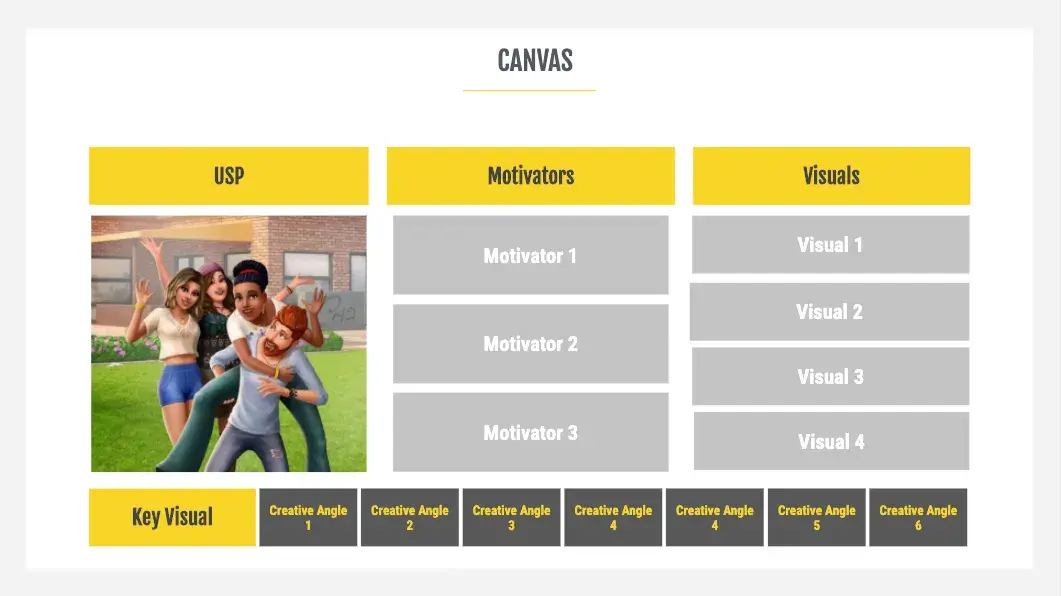
From USP to Key Visual: Building Blocks of a Creative Canvas
The process of developing a creative canvas starts with defining the messaging. We distill between 5 to 8 product essentials into a unique selling proposition (USP). The USP is one punchy and inspirational sentence that packages and presents the product.
Here are a few examples of some USPs we defined at AppAgent for our clients:
- Clash Royale: “Me against you.”
- Drive Ahead!: “Become a master car gladiator.”
- Fitify: “The most customizable weight loss workout planner.”
The USP is then visualized through a key visual, which can be thought of as a “poster” for your app or game. This key visual communicates the essence of the USP without the need for words, guiding all your marketing efforts. It sets the direction for the theme, art style, and mood you want to consistently convey to your audience across various channels.
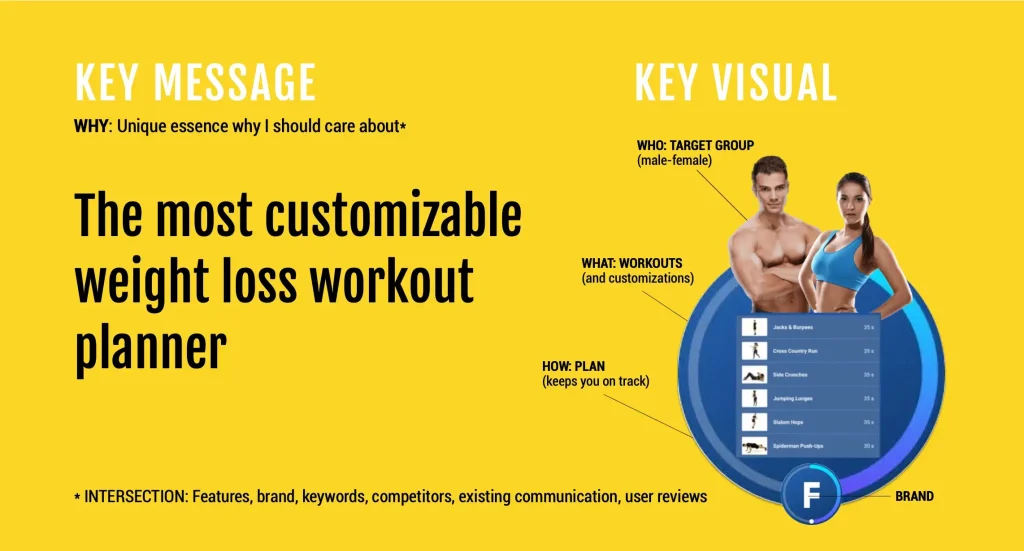
Aligning Motivational Drivers and Visual Elements
In the canvas, it’s crucial to incorporate key information about your audience, with a primary focus on their motivational drivers (as discussed in Part One of this series).
The audience and their motivational drivers serve as the foundation for the visual elements that represent your product, aligning them with the desires of the audience.
The true magic of the canvas lies in its ability to simplify the process of generating fresh ideas for mobile ads or store listings. By combining motivators with visual elements, it’s akin to assembling LEGO bricks. They seamlessly come together to form a new creative angle.
Let’s take an example from the game “The Sims Mobile.” The motivational driver of self-expression, combined with the fashion and style visual element, is encapsulated in the key message “Create Unique Sims.”
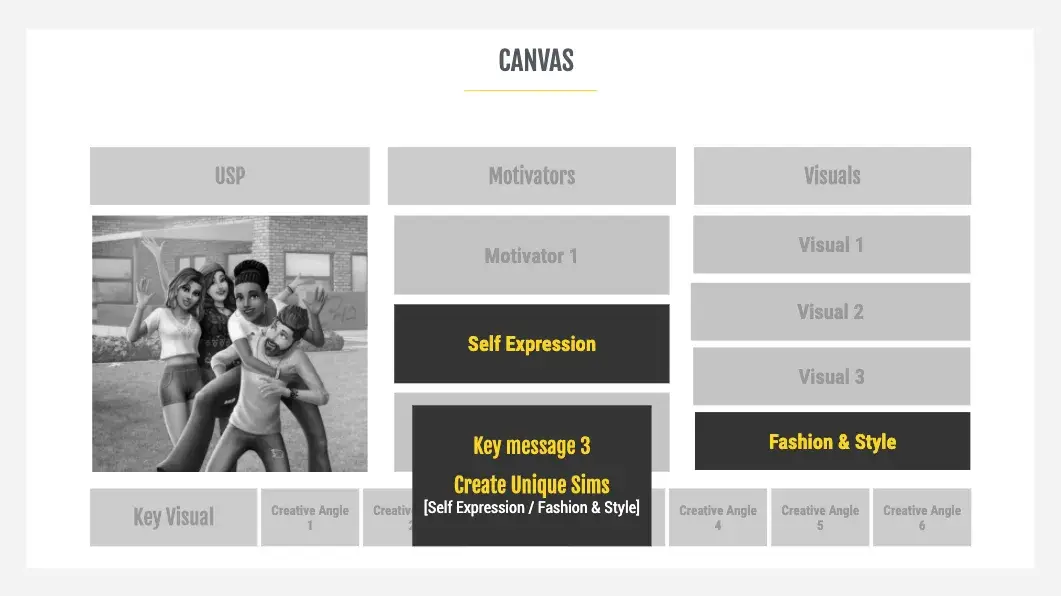
After establishing your brand and creative approach for your mobile app or game (covered in Part Three of the series), the next step involves in-house or external designers working on concepts for new video ads or store assets.
Let’s take a look at an example of how we formulated a fresh idea for Clash of Clans, centered around the progression motivator and army visual element. The successful combination of these elements is clearly evident in the final advert.
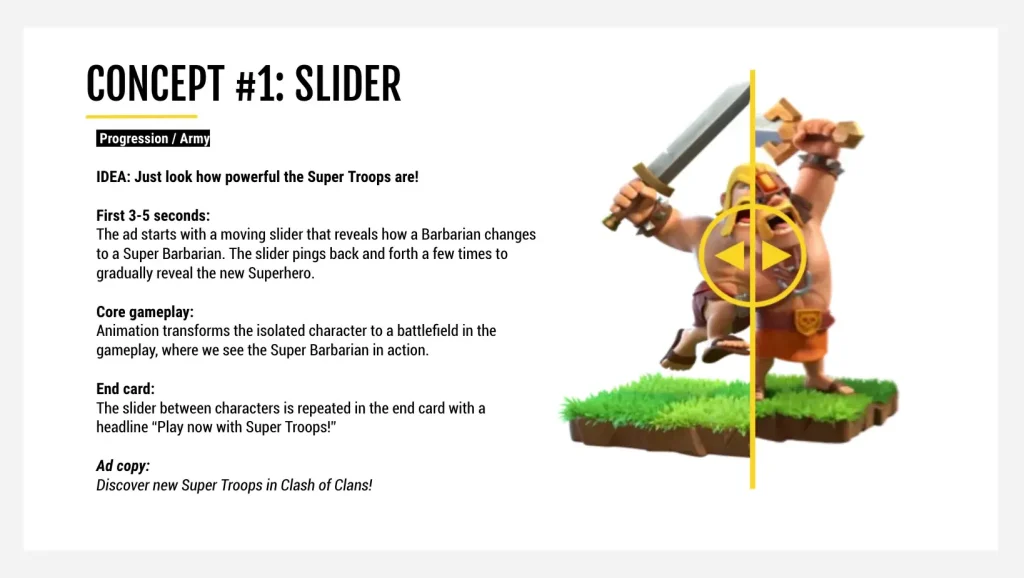
How ASO & UA Should Work Together?
Every potential client or user forms an impression about your app or game based on the information they gather over time. To describe the core communication flow, we can utilize the standard hierarchical model AIDA, which remains relevant over a century after it was developed.
AIDA Model
For mobile, the AIDA model functions as follows:
Attention: The mobile ad captures attention, especially in the first 3 seconds.
Interest: The mobile ad maintains interest in the remaining 10-20 seconds.
Desire: The store listing evokes desire, typically explored within 10 seconds.
Action: The store listing leads to action, with users installing the app.
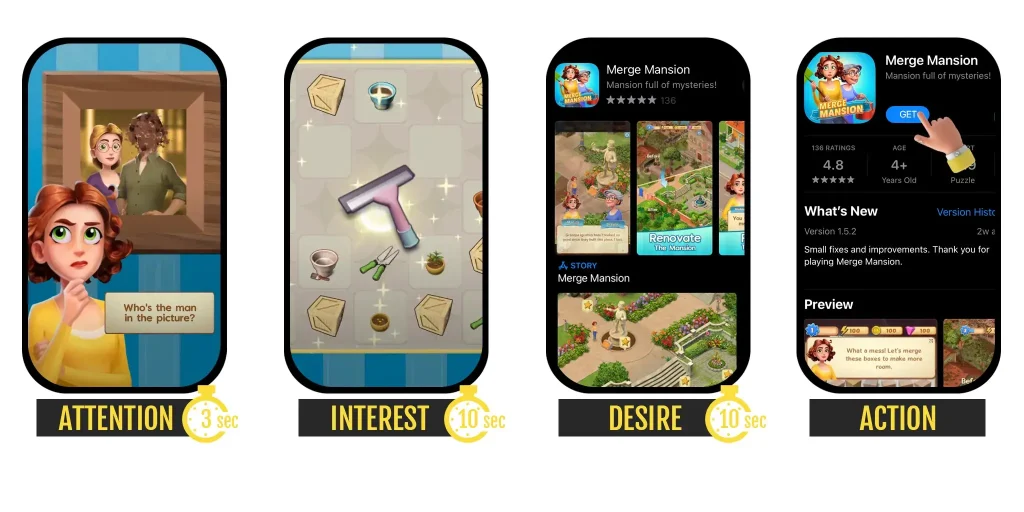
Erik Hegely, Growth Manager at game publisher Pixel Federation, offers a valuable insight:
“You could use it as a marketing tactic, where the mobile video ad teases the viewer about the game and gives a rough idea of 60% what the game is about. The store listing’s structure then aims for 90% to convince the user to install the game. And ideally, the gameplay then over-delivers and exceeds expectations by 120%.”
It should be clear that any major inconsistency between the previously mentioned touchpoints could damage or destroy the fragile mental picture that users have formed. Consequently, such discrepancies greatly reduce the chances of conversion.
On the other hand, a consistent user flow leads to an improved conversion funnel and higher-quality traffic. This, in turn, attracts users who retain better, spend more, and are more cost-effective to acquire. All these positive outcomes result from a strong mobile creative strategy that acts as a guiding light for your marketing team.
How ASO and UA Support Each Other
Connecting ASO and UA also supports the mutual influence of your ad campaigns and store experiments. Strong and successful ad creatives on platforms like Facebook can serve as inspiration for updating the store listing. Conversely, a winning store experiment might become the core idea for a new Facebook ad.
Marketing can sometimes even influence product design. A notable example is Fishdom, where their mini-games originated from fake ads. To delve deeper into fake ads, check out our next check out the next part of this series.
I recommend watching a panel discussion featuring Pixel Federation, Kolibri Games, and GeekLab on “How to Connect ASO with UA.”
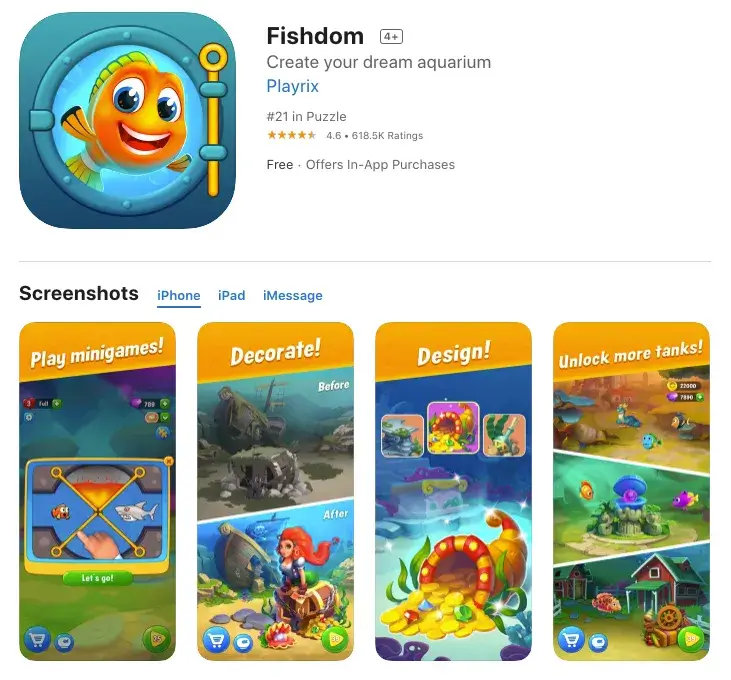
Final Thoughts
A collaborative mobile creative strategy, developed jointly by marketers and product managers, provides a clear direction for an app or game’s purpose and optimal positioning to maximize its appeal.
By implementing such a strategy, you establish a system for generating fresh creative angles while staying aligned with your product’s core attributes. This approach not only saves valuable time in generating new concepts but also ensures coherence in your marketing efforts.
The primary advantages of having and utilizing a creative strategy include:
- High-converting ads and store listings.
- Attracting better quality users.
- Consistent brand building.
So why don’t you have one yet?
REVIVING ROYALTY
A CLASH ROYALE ASO CASE STUDY
Discover how AppAgent elevated Clash Royale’s app store presence by incorporating captivating RPG-themed creatives.
